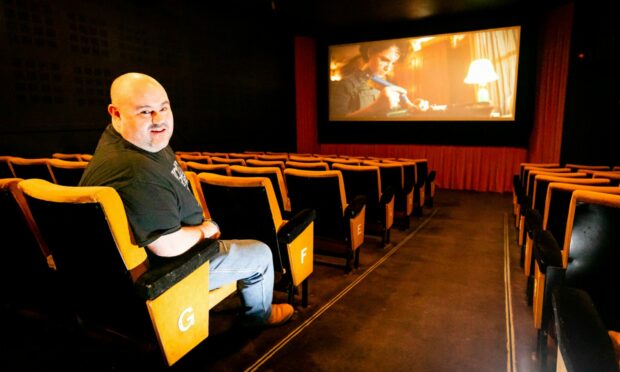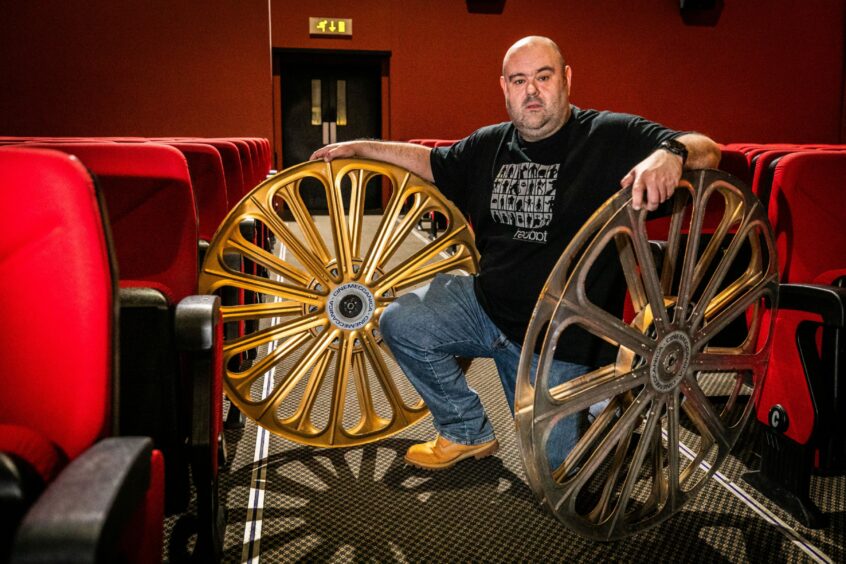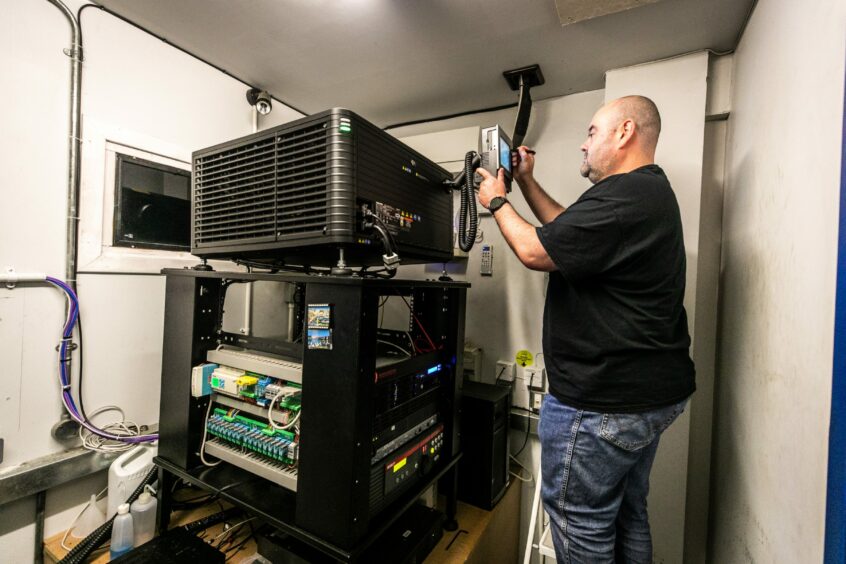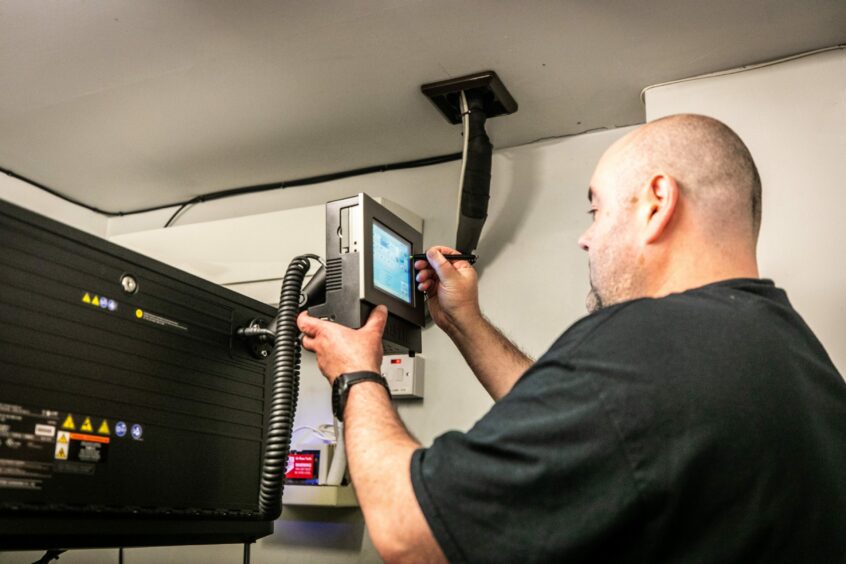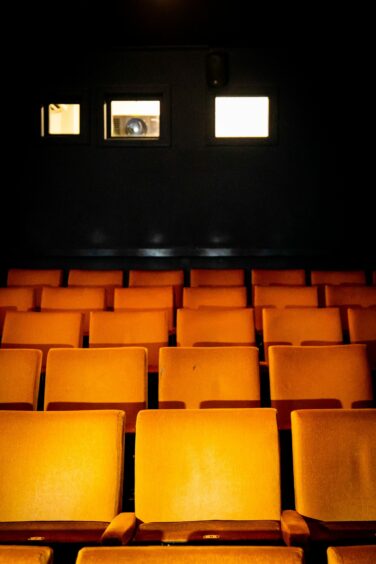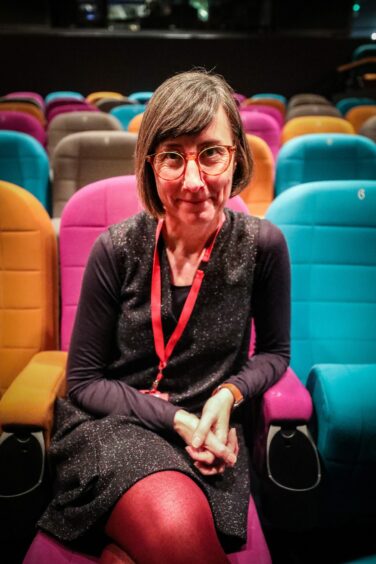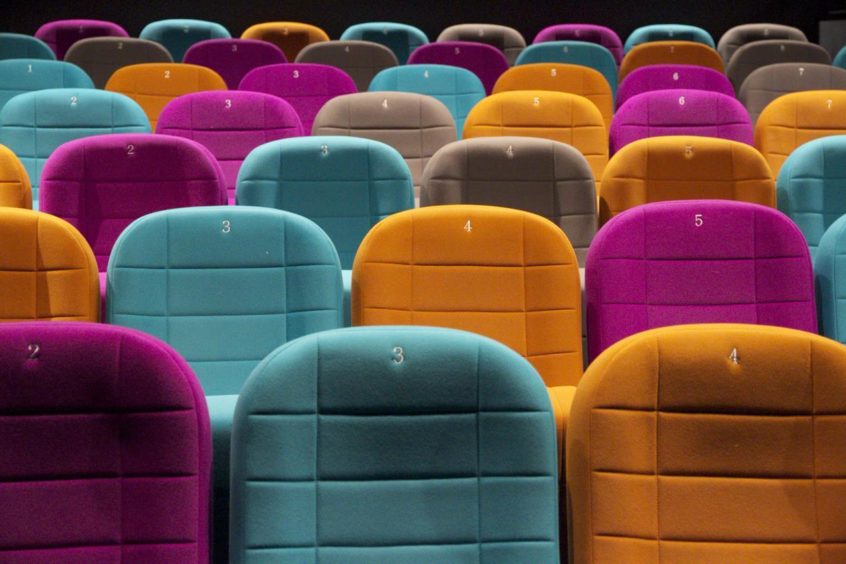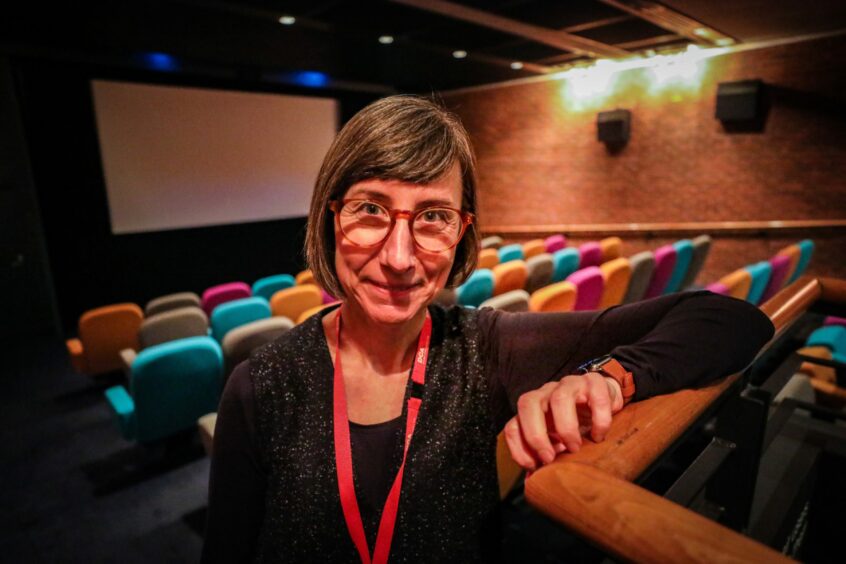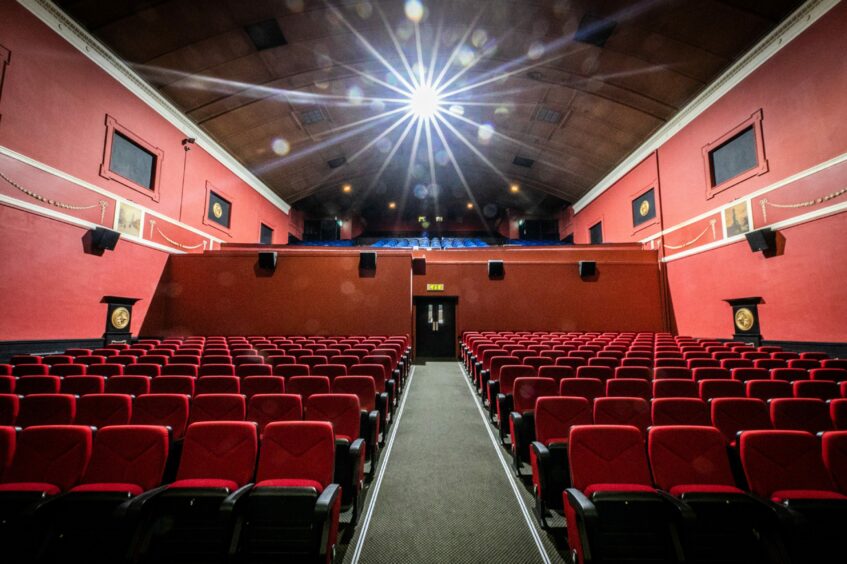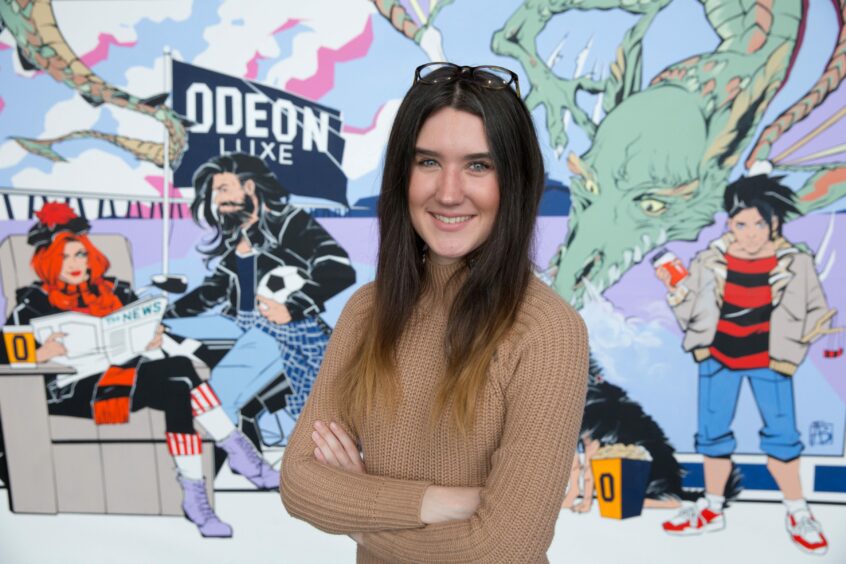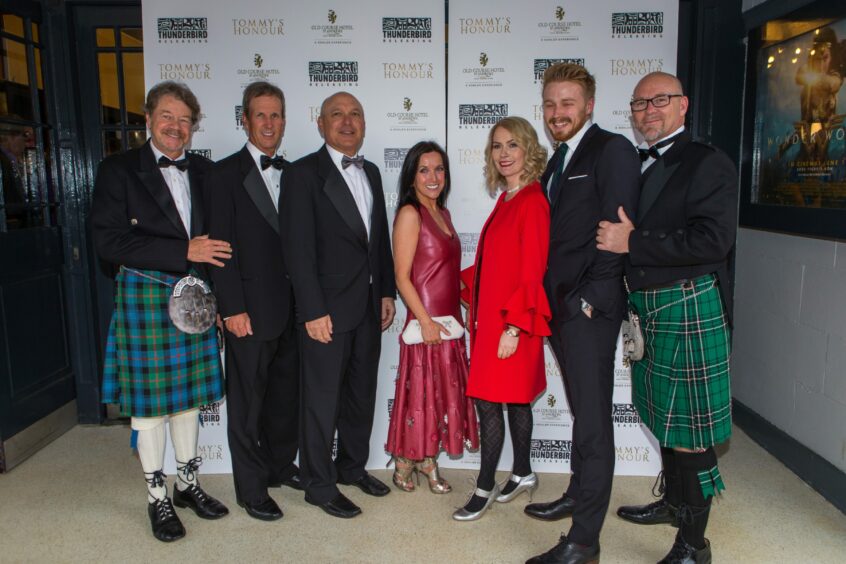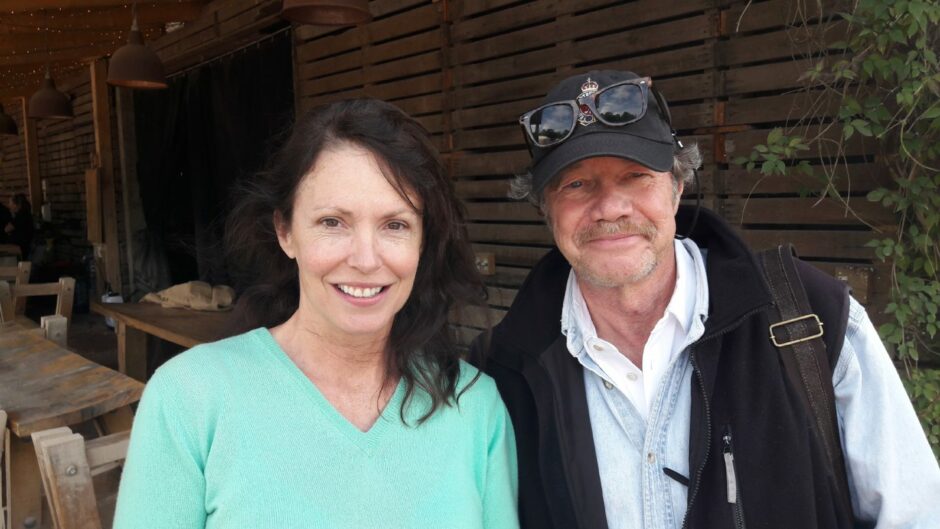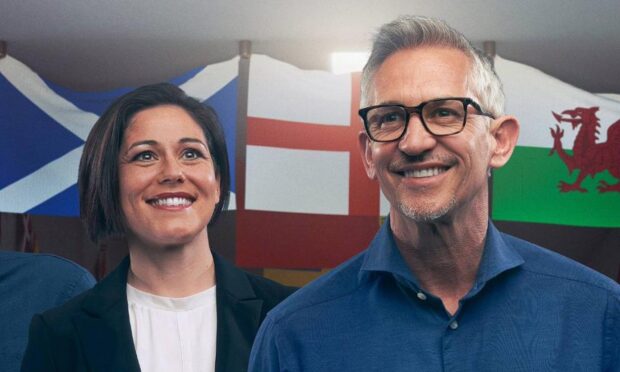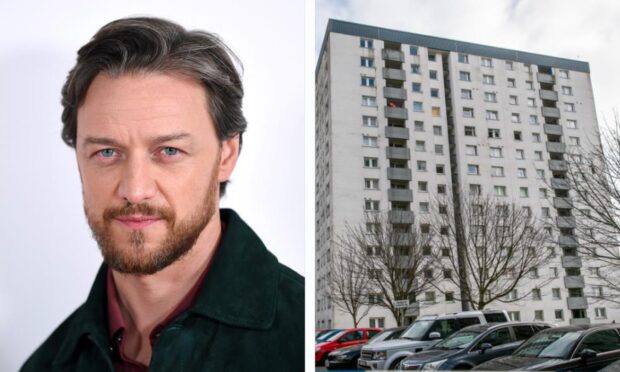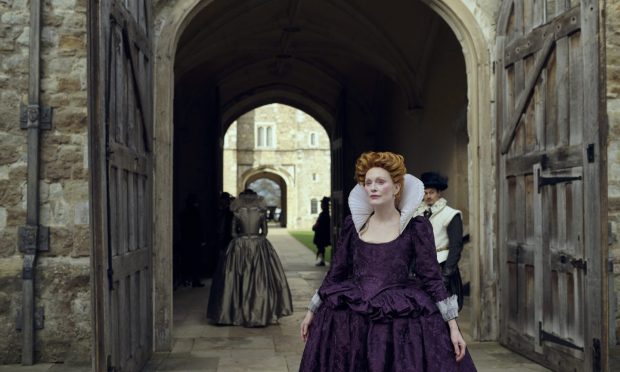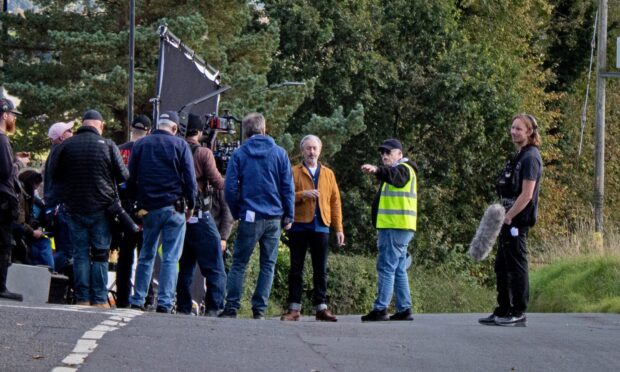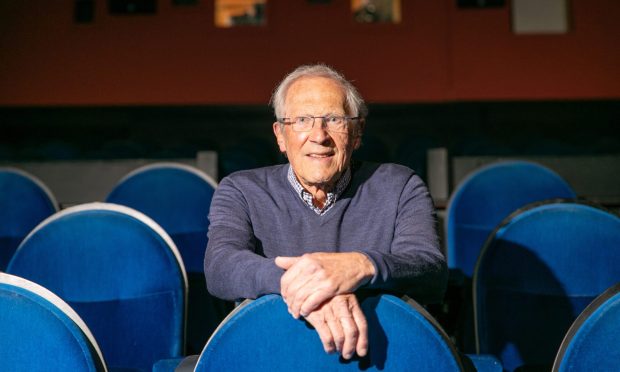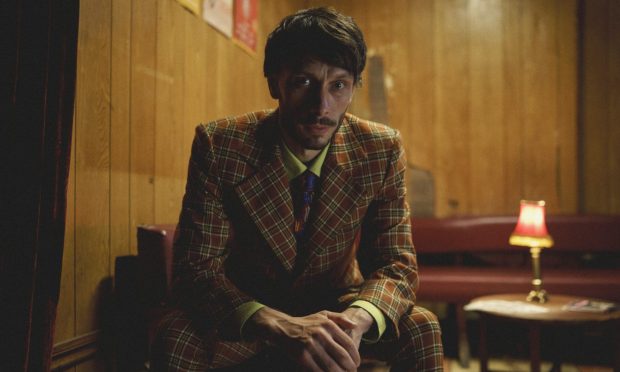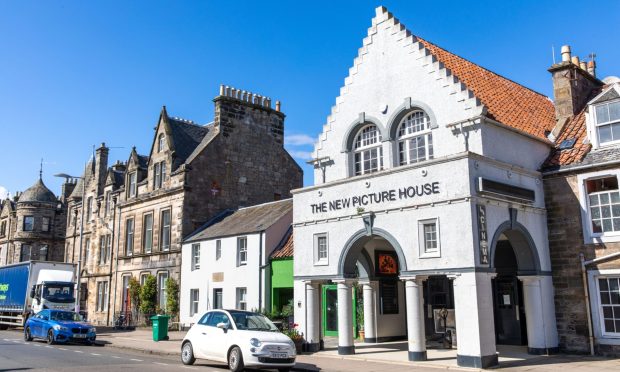Streaming platforms are transforming the way films are watched. But traditional movie-going and sofa viewing can coexist, say local cinemas. Michael Alexander – a former projectionist – went behind the scenes to find out how the industry has changed.
When St Andrews man Paul Carey worked his first shift as a part-time projectionist at the town’s NPH Cinema 30 years ago, the then 15-year-old Madras College pupil had to bring in a letter signed by his parents giving permission for him to show 18 certificate films.
Shown the ropes on his first night by the late chief projectionist Ian Collins – a remarkable man who’d lost his hearing in his 20s – Paul says it was a “complete eye opener” when he walked into the projection room for the first time and saw the size of the 35mm film reels on the projector tower.
“It was mesmerising because there was almost that mystique about cinema,” he says.
“For the majority of people, they go in, they watch a film, but they have no idea or no interest what’s going on behind the scenes.”
Learning how to ‘lace up’ the projectors, operate the Dolby sound system, manually lower the houselights and open the curtains, Ian Collins and then cinema manager Bill Munn, drilled it into part-time projection staff in the 1990s – including this writer – that if a projectionist does a good job, no one will ever know they are in the building.
By contrast, if the film snapped, went out of focus or if there was a problem with the sound, the audience would soon vent their feelings about it.
Thirty years after that first night in January 1992 when Paul helped show Bill and Ted’s Bogus Journey in Cinema One and Barton Fink in Cinema Two, his love of cinema remains undimmed.
The now 45-year old, who’s worked full time since the mid-1990s, has shown literally thousands of films and has also had the privilege of hosting red carpet screen premieres including Tommy’s Honour, directed by Jason Connery, in 2017.
Over the past decade, however, Paul has also had a front row seat for some of the most significant changes in the history of cinema, and trends that some say challenge the future of the ‘big screen’ experience itself.
Digital projection
Over the last 10 years, global cinema has moved over to digital projection.
Instead of physical 35mm film arriving in metal boxes each week, screenings are now pushed to them digitally over fast broadband connections.
Key to the NPH Cinema’s three projection rooms nowadays is a playback server in which the films are stored on and played through the projector.
Less hands-on from a projectionist’s point of view, the theatre management system controls everything from turning the auditorium lights on and off, to opening and closing the curtains and starting the film at the correct time.
This leaves Paul, as technical manager, more or less in a supervisory position whereby he’s constantly monitoring what’s happening.
Inevitably, Paul says, this “hands-off” approach means there’s less need for cinemas to have as many projectionists.
Some might say it even takes away the romance of the job.
Film distributors set up a fund to help cinemas pay for the switch to digital equipment.
However, despite threats to the industry from streaming and despite the impact of Covid-19 which forced the cinema to close its doors for a while in 2020, Paul believes the future of the cinema industry in the 21st century remains strong.
Blockbusters
“Like a lot of business, cinemas across the UK were placed under a lot of pressure with the original Covid-19 lockdown of March 2020,” he says.
“For us it was a case of trying to keep the business ticking over while it was in hibernation.
“Thankfully, things like furlough helped the business retain its staff. We were lucky enough to be awarded some external funding from Creative Scotland to keep the business in the black.
“Then when the business started to come out of hibernation in the summer, we were always going to be apprehensive – was cinema still going to be a medium people wanted to come and visit?
“Perhaps over the course of lockdown, people had got so used to watching films on Netflix and other online streaming services that they are going to be reluctant to come back into a cinema?
“But we were pleasantly surprised to see people do genuinely want to still experience films on the big screen.
“For us, when the new James Bond film No Time To Die came out, it was amazing to see the wealth of people coming into the premises which gave us a real boost. It was like that for the whole UK cinema industry.”
Theatrical window
Not very long ago in a film industry not too far away, it took months or even years before films shown in cinemas would be seen on TV or released onto video or DVD.
More recently, there have been high profile rows about the length of the “theatrical window” – the time between films being out at the cinema and being released to other services.
In the summer, for example, Hollywood star Scarlett Johansson sued Walt Disney over the release of the Marvel superhero movie Black Widow.
Johansson accused Disney of breaching her contract and depriving her of potential earnings when it offered the movie on its Disney+ streaming service while it was still showing in cinemas. The dispute was settled in October.
In August, Dune director Denis Villeneuve sparked debate about the big screen experience when he said the pandemic was the “enemy of the cinema”.
He was also amongst the most vocal opponents of Warner Bros.’ decision to put its entire 2021 slate both in cinemas and HBO Max for one month on the same day.
Streaming was already a growing issue before the pandemic. Covid-19 undoubtedly pushed it further.
However, perhaps the biggest selling point for cinema remains that “shared experience” that can never be recreated on the small screen.
Positive view at DCA
Alice Black, Head of Cinema, at DCA in Dundee, explains that DCA also embraced digital cinema technology very early on. In addition, they installed 3D and satellite and had a few dabbles in VR too.
Despite the changes, Alice says the “old business model” still prevails.
Distributors still hold all the power to decide if and when a cinema can show a film.
Exhibitors like DCA still have to pay for films to be “delivered” to them even if they are coming through a high speed internet connection or satellite feed.
While many cinemas were tossing out their 35mm equipment and letting their projection staff go, DCA has retained its 35mm and 16mm film projectors and all their projectionists are trained to use them.
When it comes to the challenge posed by streaming and shortened release windows, however, Alice says smaller independents and art house cinemas like DCA have always taken a more positive view than the multiplexes.
“We don’t see it as competition but rather as complimentary!” she says.
“In fact, studies have shown that people who watch a lot of films at home, are also the ones who come to the cinema most often.
“Certainly streaming services like Netflix have increased the appetite for subtitled films from other parts of the world, like the success of Squid Game for instance.
“When we feel the film needs it, we are delighted to show it on the big screen even if it is going to be available simultaneously to watch on a small one.
“And one of the biggest changes at DCA since Covid-19 is that we now also have our own streaming platform.
“DCA at Home ( https://athome.dca.org.uk/ ) is our virtual third screen where people can watch the kind of films we champion in our cinemas from their own living rooms.”
Community role for cinemas
According to Screen Scotland – which sits within Creative Scotland to lead growth within the film and TV sector – independent cinemas continue to play a vital role in communities across Scotland.
A spokesperson describes cinemas as “magical, transportive places where we come together to experience stories collectively” – something that cannot happen at home.
“The magic and escapism of cinema is something we need now more than ever,” the spokesperson says.
“The passionate, dedicated staff in cinemas across Scotland have worked hard over the past year to ensure a safe return of the big-screen experience and Screen Scotland, with the support of the Scottish Government, was proud to help them.”
Odeon, whose multiplex cinemas include Dundee and Dunfermline, have also been encouraged by strong consumer demand for the big screen, welcoming back millions of guests nationwide since re-opening in May.
“Local cinema is at the heart of this,” a spokesperson says: “with Dundee being home to one of our fantastic Odeon Luxe cinemas.
“We are committed to innovating new and better ways for customers to enjoy the films they love and improving the big screen experience.
“We remain confident in our proposition and believe cinema has a bright future.”
Differing age groups
Research suggests, however, that amid ongoing Covid-19 uncertainty, it’s young people who have been returning to cinemas fastest.
The UK Cinema Association undertook research after the first national lockdown in 2020 to show how many people had missed cinema during that time.
Research carried out by The British Board of Film Classification (BBFC) during May 2021 also found that teenagers missed cinema the most during lockdown.
It’s a trend recognised by American film producer Jim Kreutzer, who produced the Scottish BAFTA-winning film Tommy’s Honour – the powerfully moving true tale of St Andrews-born father and son golfing legends ‘Old’ Tom and ‘Young’ Tommy Morris.
“The trend in films right now is that young people are going back to the cinemas,” he says, speaking from Chicago where he co-runs Sheridan Road Productions.
“Older people are hedging their bets – they’re not going back so quickly. They are more vulnerable to the virus. They are more resistant to going out, and younger people have this laissez faire ‘let’s go for it, who cares’ attitude.
“The James Bonds, the Marvel comics, the Spidermans… those will rescue the theatres and already have.
“That’s where the focus of theatres will be for the next year or so, I can guarantee that.
“But you’ll still find many older people – over the age of 45/50 – will simply stay home and watch the streamers because they are being released by the ‘over the top televisions’, referred to as OTTs, simultaneously as the films are going into the theatres.
“I think many of those older people will be content to stay at home and watch the films if they want rather than go to the theatres.”
Optimistic
During the pandemic, his business partner Maryilene Blondell was in the Isle of Lewis filming The Road Dance – a film based on a book by STV news reader John MacKay which premiered in Edinburgh and goes on general release in spring.
The women’s drama, set in the First World War, is geared towards an older audience.
Amid some market uncertainty, however, Jim remains confident enough to bring it out when planned.
Jim expects to see film companies make more efforts over the next year to promote younger, blockbuster, franchise films.
Streaming services like Amazon, Netflix and Youtube, meanwhile, will make films aimed at an older audience that are just as costly if not more so, knowing that they will capture a broader audience of different people.
He admits, however, that he doesn’t know what the long term trend might be if and when Covid-19 subsides.
On edge
“We are doing a CBS TV series as well as a documentary here and our CBS TV series might be shot in the UK,” he adds.
“When we raised sponsorship money to promote these projects, all of them are saying to us, they just don’t spend money as easily as they used to. They are all on edge, they just don’t know what’s going to happen.
“They have a lot of pent up desire. But there is a great deal of uncertainty here in cinemas as well as brandings, sponsorships companies, about how much marketing money they should put into projects, televisions series or films.
“It’s a scary world we’re in – especially an independent like us. We can’t afford mistakes like other studios can. We have to be careful.”
